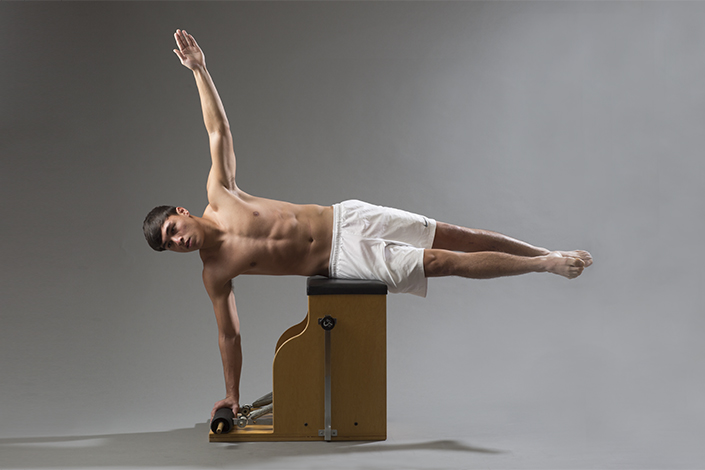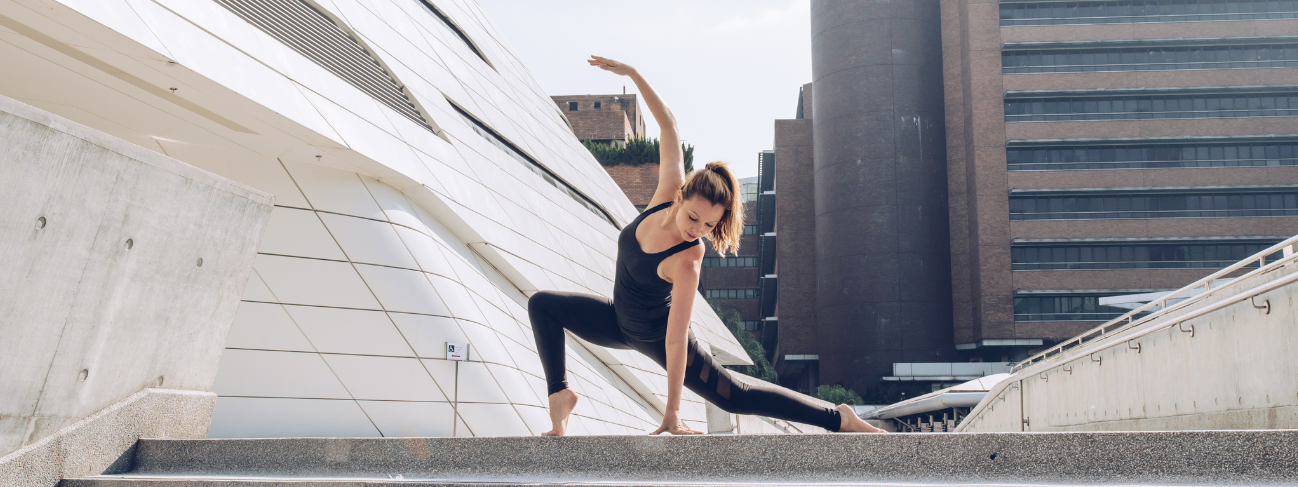18 Mar The Power of Pilates for Triathletes

“I will never forget the day I was swimming and a light bulb went off. I had finally found my core,” says four-time Ironman finisher and world championship qualifier Michele Landry, for Triathlete magazine. “My muscles were in synergy.”
What caused such a revelation? Pilates.
Developed in the 1920s by Joseph Pilates to rehabilitate injured detainees in war camps, the Pilates method is renowned today for its benefits in improving flexibility, strength, and body awareness. For triathletes, Pilates has proven to be a powerful cross-training secret. Landry, who became a STOTT Pilates Certified Instructor and found her own studio in Washington, D.C., has provided specialized Pilates training for endurance athletes for the past four years.
Former competitive swimmer and triathlete Ashly Wenzel also became a certified Pilates instructor upon seeing the benefits of the practice firsthand. After being hit by a car on a training ride, Wenzel turned to Pilates as a way to stay active without taxing her injured body. When she returned to competition, she discovered her cycling strength exceeded her pre-accident levels. Today, she coaches athletes through her studio in Arizona. “Pilates will help alleviate pain caused by endurance sports and strengthen the essential muscles that make you a stronger cyclist, faster runner, and more efficient swimmer,” says Wenzel, “It develops stability, strength, and flexibility, which are all needed to gain speed and prevent injury.”
Landry says initial Pilates sessions can be eye-opening for athletes: “If you are new to Pilates, you may walk away from a session not necessarily feeling tremendous muscle fatigue or soreness, but you will be surprised how imbalanced your muscles are. Pilates workouts are designed to make you physically balanced while building strength in the muscle groups specific to endurance sports. We focus on the tiny muscles that support your dominant, superficial muscles.”
Incorporate Pilates into your training routine by including these five exercises designed for triathletes:
Swimming
Lie face-down on a yoga mat. Create one long, straight line from the crown of your head through your toes. Engage your core by imagining your belly button pulling away from the floor.
With your palms facing the floor, lift one hand and the opposite foot at the same time, reaching forward and back as if you are being pulled and stretched out. Switch sides. After 10 repetitions on each side, take a short break.
“Triathletes spend a lot of time flexed forward,” says Landry. “This exercise helps strengthen your lower back and glutes, as well as improves your posture.”
Roll Up
Begin in a seated position on the floor, with legs straight and inner thighs squeezed. Bring your arms in front of you, parallel to the floor with shoulders down and back.
Inhale as you begin to roll down to a lying position on the floor. Pull your navel deep into the spine, pressing the small of your back into the mat first, then continuing one vertebrae at a time. Exhale as your shoulders and head touch the floor, with your arms reaching to the ceiling. Inhale and slowly roll back to a seated position. Repeat five times.
“This exercise strengthens the abdominals,” says Wenzel, “It’s also a great stretch for the entire back of the body, from the heels to the back of the neck.”
Leg Circles
Lie on your back with knees bent and feet flat. Maintain a neutral spine position (small space under your lumbar spine, do not arch your back).
Straighten your right leg and lift your right foot toward the ceiling, keeping your left knee bent. Inhale as you lower your right leg down (no lower than left knee level). Open your leg to the right only as far as you can maintain a level pelvis. Do not let your right hip drop. Exhale to bring your leg back up and return to your starting position. After 10 repetitions, reverse directions, then switch legs.
This exercise helps open the hips as well as strengthen the oblique abdominals for pelvic and hip stability while running, says Landry.
Shoulder Bridge
With your hands under the back of your pelvis, press hips up into the bridge position, shoulders connected to the floor. Make sure your feet are parallel, with even weight distributed on the heels, pinky toes, and big toes.
Inhale, pointing your toes as you lift one leg up to the ceiling. Focus on stabilizing your hips. Exhale as you lower your leg, flexing your foot to form a 90-degree angle with your leg. Repeat three times before switching sides.
Wenzel uses this exercise to strengthen and stretch the glutes and hamstrings.
Single Leg On Side
Lie on your right side, cradling your head in your right hand. With the bottom leg slightly bent, straighten and elongate top leg. Your left hand can rest on your hip to make sure the hips stay stacked.
Inhale and sweep your top leg forward. When you leg forms a 90-degree angle with your body, engage (squeeze) your left glute, then exhale and slowly bring leg back to starting position. Perform 10 repetitions, then bend the top leg to rest on the bent bottom leg. Keep your heels glued together and slowly open the top knee (imagine opening a book). Pause at the top for a moment, then slowly return to a closed position. Perform 15 repetitions, then switch sides.
Landry recommends this exercise to strengthen the glutes, which in turn provides power and stability on the bike and run.
Learn more effective Pilates exercises this month during March MATness, with Flex’s daily exercises posted on Facebook
Written by By Susan Lacke
This article was previously published by Triathlete magazine – http://triathlon.competitor.com/2014/12/training/pilates-offers-strength-balance-benefits-to-triathletes_91321


